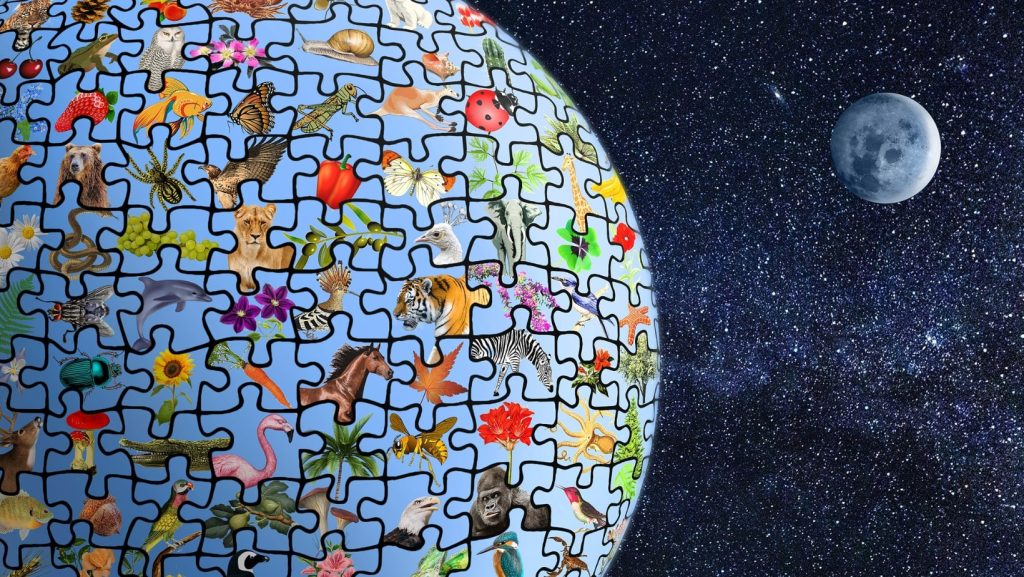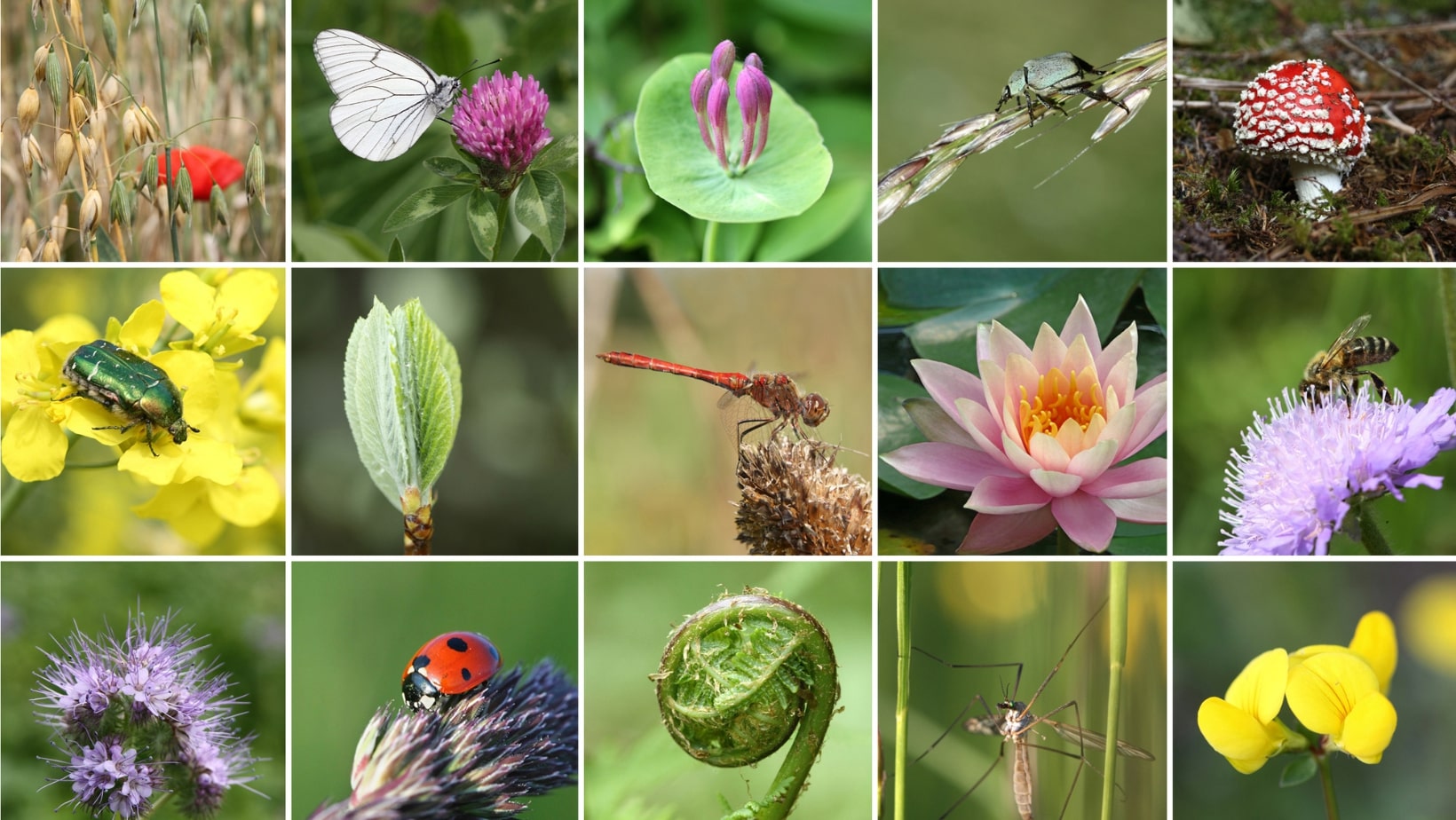Life on Earth has developed over millions of years, and all living beings, including humans, form what we call biodiversity.
“Biodiversity” refers to the variety of all living species (plants, animals, fungi, and microorganisms) that inhabit our planet. On a smaller scale, it can also refer to the variety of species within a specific habitat.
Biodiversity manifests on three increasingly broad levels:
Genetic diversity within the same species, making each individual unique
Taxonomic diversity, or the variety of species within a region or the world
Ecosystem diversity, referring to the variety of habitats, communities (biocenoses), and ecological processes in land, rivers, oceans, etc.
Loss of biodiversity: what are the consequences?
Biodiversity is essential because each species plays a specific and irreplaceable role in the ecosystem, contributing to its balance and functionality. However, in recent decades, biodiversity has declined due to human activities.
This loss affects not only individual ecosystems but can also have global consequences, influencing essential resources such as food, air, and water.
Key consequences of biodiversity loss include:
Ecosystem imbalance: Each species plays a role (predator, prey, decomposer, pollinator). The loss of a single species can trigger a cascade effect, endangering other species.
Reduced ecological resilience: Biodiversity helps ecosystems withstand and recover from disturbances (fires, floods, epidemics). Less biodiversity = less resilience.
For humans, biodiversity loss poses serious risks such as:
Changes in ecosystem services: Ecosystems provide vital services like food, water, and climate regulation. Loss of biodiversity can compromise these processes.
Food security risks: Biodiversity supports stable food chains. Losing species may reduce agricultural and fishery productivity, endangering food supply.
Economic impacts: Key sectors (fishing, agriculture, tourism) rely on biodiversity. Many products are derived from natural organisms.
Biodiversity loss can also damage humanity’s relationship with nature, especially in cultures that view specific species or habitats as integral to their identity and spiritual heritage.
Protecting biodiversity is therefore essential for the well-being and survival of all life on Earth, and for ensuring a sustainable future. At Salumificio Pedrazzoli, we are committed to doing our part. Our company takes a clear stance against intensive farming, recognizing its role in destroying biodiversity and disrupting natural balances.
Our corporate philosophy aligns with sustainability and environmental respect, as demonstrated by our ISO 14001 certification, which confirms our commitment to an effective environmental management system.
Safeguarding biodiversity
For all these reasons, protecting biodiversity has become a top priority on the agendas of many countries and international organizations.
Over the past decades, numerous initiatives and strategies have been adopted to combat biodiversity loss, not only by individual states but also by bodies such as the European Union and the United Nations (UN).

Just consider that as early as 1992, at the Earth Summit held in Rio de Janeiro, the world’s leaders recognized the need to create a legally binding international treaty: the Convention on Biological Diversity (CBD).
This convention aims to ensure the sustainable and equitable use of biodiversity, while also setting goals and strategies for its implementation within individual countries—goals that, however, are still struggling to be fully achieved.
The European Union has also adopted various biodiversity strategies over the years. Among them is Natura 2000, a true ecological network made up of designated conservation areas called Sites of Community Importance (SCI), aimed at ensuring the long-term survival of Europe’s most valuable and fragile species and habitats.
Expanding the Natura 2000 network are the EU Biodiversity Strategy for 2030 and the Nature Restoration Law, which aim to protect biodiversity, reverse ecosystem degradation, and realize the EU’s vision to restore both terrestrial and marine ecosystems.
Likewise, the 2030 Agenda for Sustainable Development, adopted by the United Nations in 2015, addresses various aspects of biodiversity as an essential dimension of sustainable development.
For example, Goal 15 focuses specifically on biodiversity loss and aims to “protect, restore and promote sustainable use of terrestrial ecosystems”, while also combating desertification, land degradation, and promoting sustainable forest management.
Within their own borders, many countries establish national parks, reserves, and other protected areas to conserve critical habitats and endangered species. They also adopt laws regulating the use of natural resources to prevent deforestation, overfishing, and poaching, while protecting specific species and habitats.
It’s important to remember that biodiversity protection is a global responsibility, not solely the task of nations or major international organizations.
Every entity, from the largest to the smallest, can contribute in meaningful ways. At Pedrazzoli, for example, we don’t just comply with environmental regulations—we take concrete, proactive steps to protect the environment.
One of our most symbolic actions in this field is the creation of the “Biodiversity Forest”, a project launched to help restore ecological balance and provide a refuge for local flora and fauna, showing that you don’t have to be a government to make a difference.
On the land adjacent to our facilities, we have planted native tree species—once common in the Po Valley, but now at risk of disappearing. With this initiative, we strive to support the planet in the ways we can, doing our best to protect and respect it.
Biodiversity in Italy
So what about Italy?
Italy is one of the countries with the greatest biodiversity in Europe, thanks to its unique geographic location and its wide variety of habitats and climates.
Between seas, plains, and mountains, Italy hosts about 60% of Europe’s plant species, as well as many endemic animal species—that is, species found only in Italy.
However, the country’s fragile biodiversity is also threatened by numerous factors, including urbanization, intensive agriculture, deforestation, and especially global warming:
nearly 70% of Italian ecosystems are currently at risk, and in some areas—such as the Po Valley—the figure approaches 100%.
The impact of pollution on italian biodiversity
Pollution is also one of the main human-driven causes of biodiversity loss, contributing significantly to climate change. But that’s not all.
In and of itself, pollution represents a serious and direct threat to both the environment and biodiversity.
In Italy, the main issue is fine particulate matter, affecting air quality:
air pollution severely damages plant life and, through acid rain, impacts soils, lakes, and forests—natural habitats for countless wild species.
As an EU member and a sovereign state, Italy has adopted a number of strategies and action plans to protect its (rich) biodiversity.
These include the designation of national and regional parks, nature reserves, and Natura 2000 sites, as well as the ratification of the Convention on Biological Diversity.
However, despite these efforts, biodiversity in Italy remains under pressure, and further action is needed to ensure its long-term protection and preservation.
Pollution remains one of the most impactful factors, and the greatest challenge will be tackling its causes and consequences to safeguard ecosystems for future generations.


